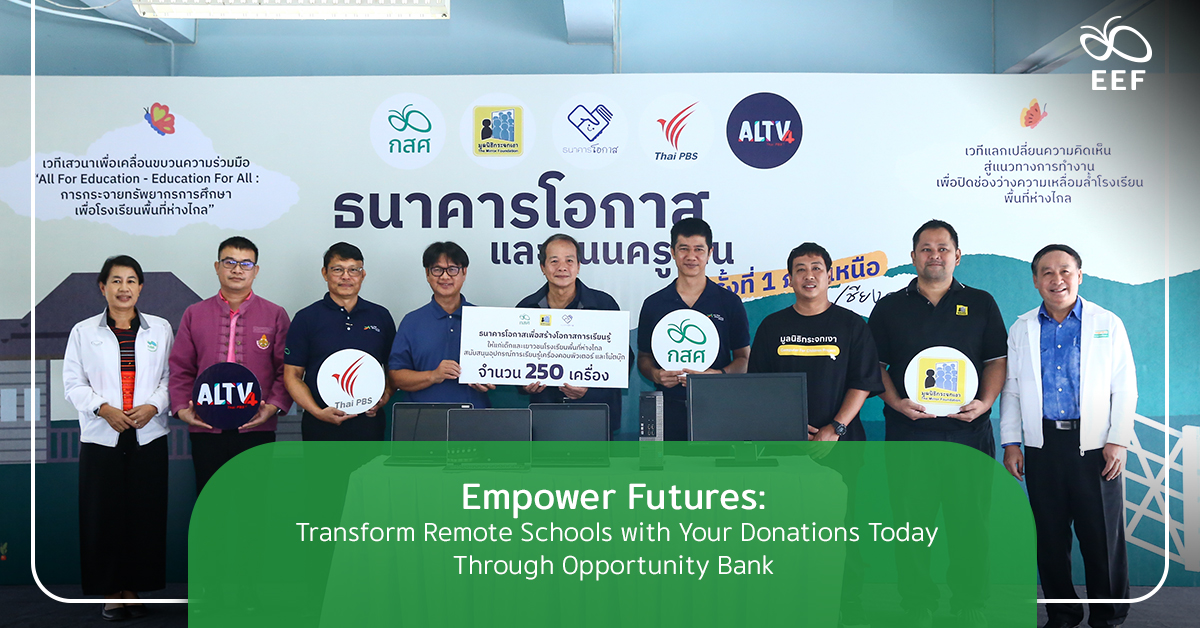
In the ongoing battle to reintegrate socio-economically disadvantaged children and youth and address educational disparities, the Equitable Education Fund (EEF) Thailand stands out as a beacon of hope, supported by government backing. Despite public allocations and donations, the financial strain on the Thai government underscores the need for innovative solutions to achieve lasting impact. Recognizing this, the EEF Thailand has pioneered creative financing models and forged impactful partnerships with major corporations. By combining state support with inventive financial strategies — such as bond issuance and fundraising, it aims to build a robust safety net that keeps children engaged in education and drives significant advancements. This dynamic approach not only optimizes existing educational systems but also paves the way for transformative progress in bridging educational gaps. Emerging as a shining example of such innovation is the Opportunity Bank. This initiative not only provides essential resources but also fosters career guidance and scholarships to support student development. Through a streamlined process, it ensures that every contribution is maximized for impact. Curious about what schools in remote areas need and how you can make a donation through the Opportunity Bank? Find out all the details right here, right now.
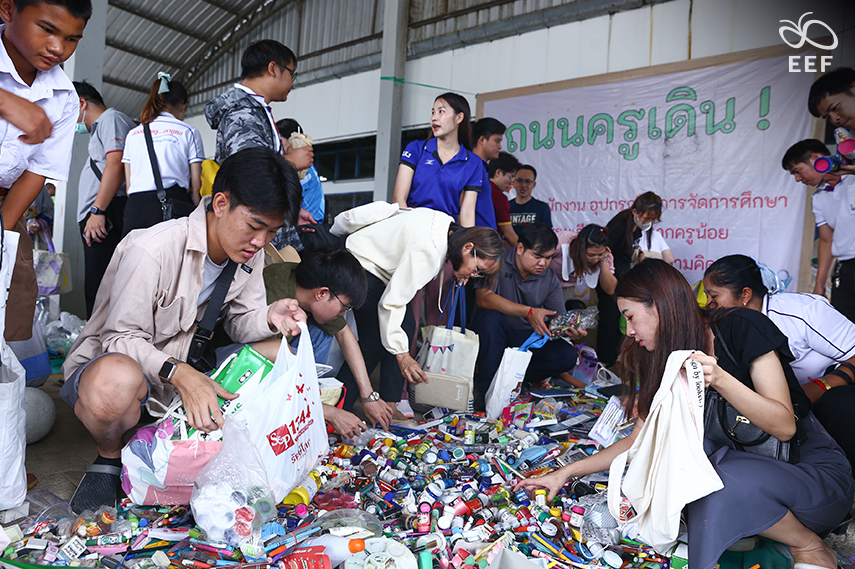
The Opportunity Bank primarily addresses nine crucial needs of schools in remote areas. These include uniforms, sports equipment, kitchen supplies, and reading materials, as well as learning aids and first aid supplies. It also provides personal items, career guidance, and scholarships. By focusing on these essentials, the Opportunity Bank works to enhance educational equity and support students’ development.

The Opportunity Bank accepts donations of laptops, tablets, mobile phones, and educational materials, both new and used. Donors benefit by enhancing youth development, promoting sustainability, and enjoying double tax deductions. Donations also cover internet support for remote schools, transportation of goods, and maintenance costs.
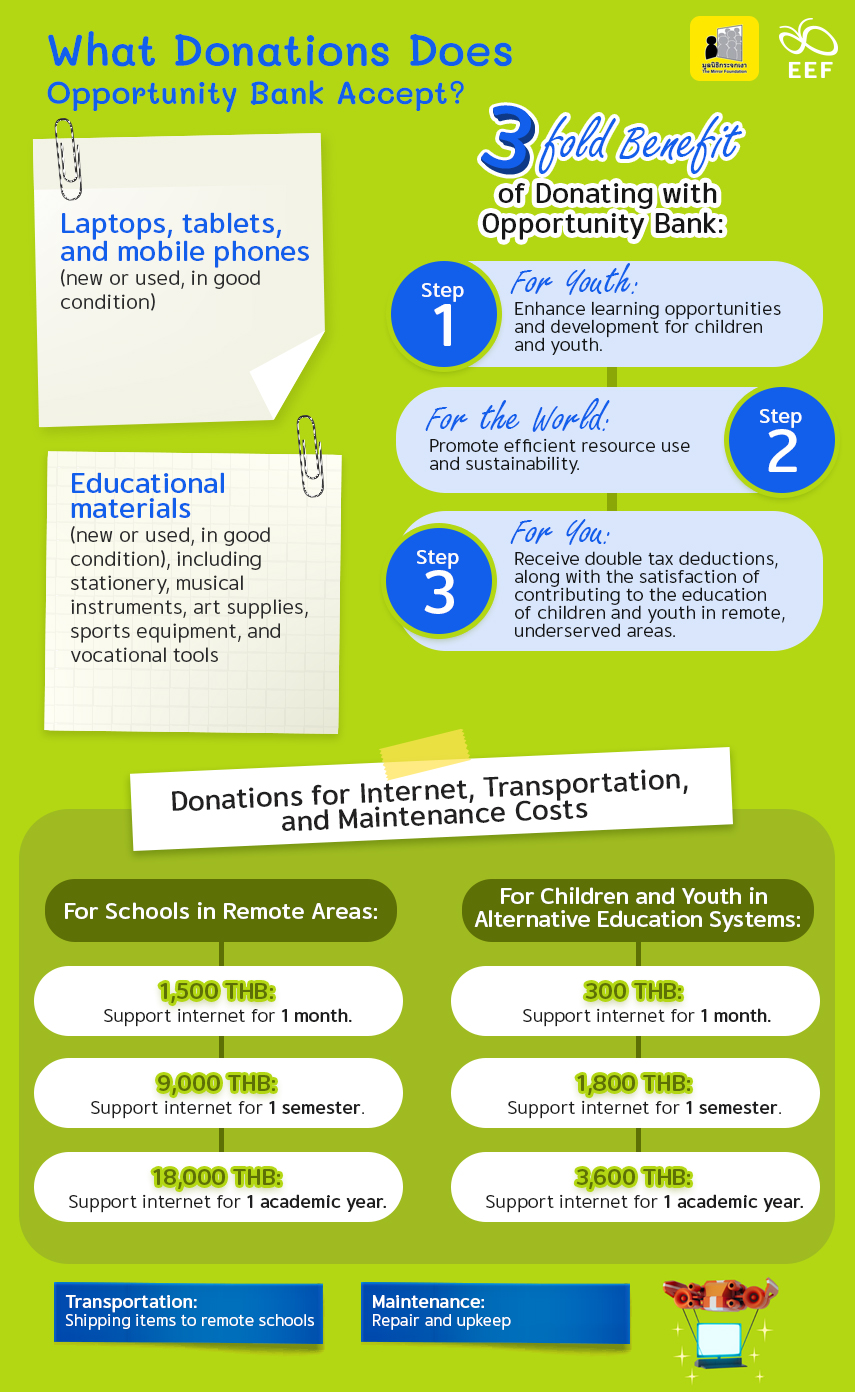
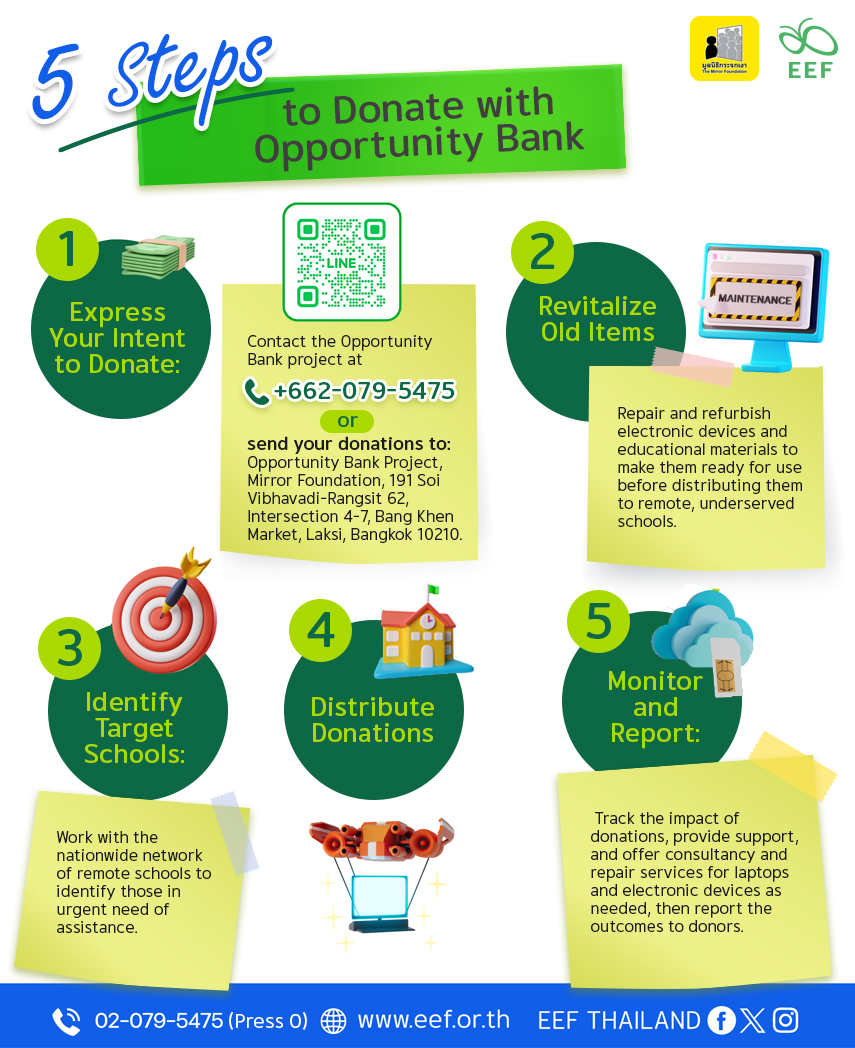
In the broader effort to tackle educational disparities, the Equitable Education Fund (EEF) Thailand stands at the forefront, bolstered by strong government support. Central to this mission is the EEF’s Information System for Equitable Education (iSEE), which plays a crucial role in identifying and supporting at-risk children and youth. This system, combined with a sustainable framework and clearly defined outcome targets, is instrumental in addressing dropout issues and setting a high standard for private sector involvement in educational financing. The EEF’s approach integrates state resources with innovative financial models, creating a robust mechanism for addressing educational gaps and forming a more closed-knitted safety net to prevent at-risk children and youth from falling through the cracks. Private entities are vital in this ecosystem, contributing not only funds but also participating actively in monitoring and demonstrating the impact of their investments. Effective communication of project outcomes and alignment with funder expectations are essential for securing ongoing support.
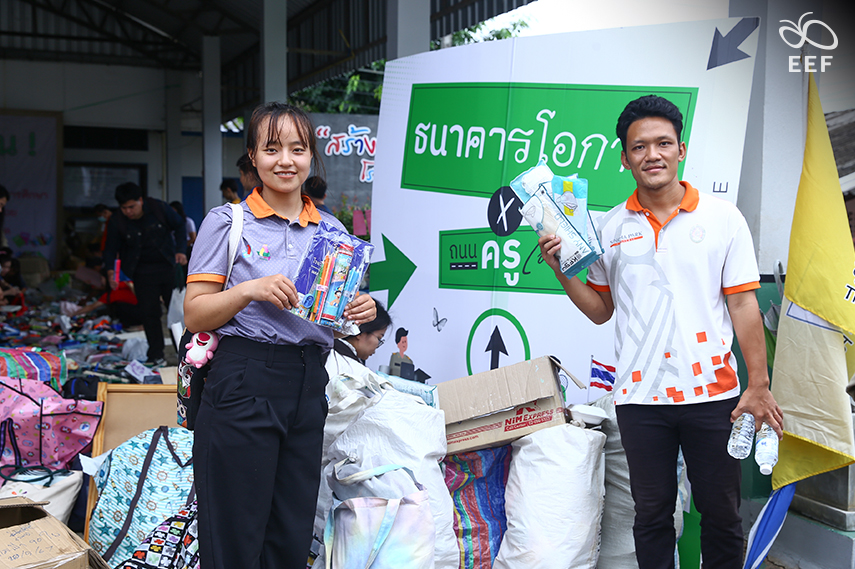
Exemplifying this innovative spirit is the Opportunity Bank, which significantly enhances educational opportunities by supplying critical resources to remote, underserved schools and managing donations with efficiency and precision. The combined efforts of the EEF’s strategic framework and the Opportunity Bank’s targeted initiatives showcase the profound impact of collaborative approaches in advancing educational equity and bridging global educational gaps. Together, these initiatives highlight the transformative potential of unified efforts to drive meaningful change in the education sector. This vision perfectly encapsulates the EEF’s founding ethos, which aims to reduce educational inequality through research, collaboration, and support for children, youth, and adults in need.

